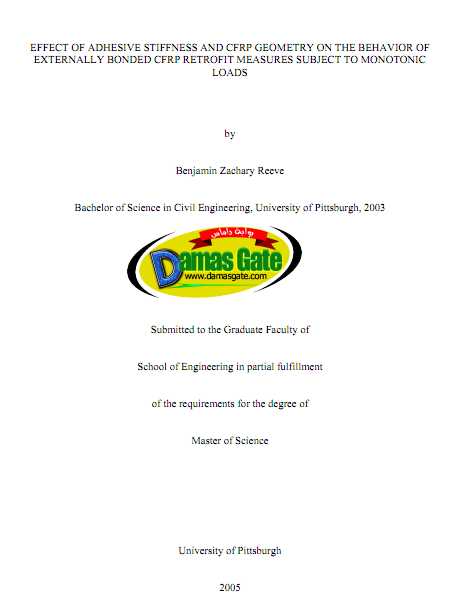EFFECT OF ADHESIVE STIFFNESS AND CFRP GEOMETRY ON THE BEHAVIOR OF
EXTERNALLY BONDED CFRP RETROFIT MEASURES SUBJECT TO MONOTONIC LOADS

1.1 INTRODUCTION
The need for repair and retrofit in infrastructure is a growing field. In most cases,
repairing or retrofitting a deficient structure is more economically efficient than demolishing the
existing structure and erecting a whole new structure, especially in cases where only a fraction of the structure is deficient.
Fiber Reinforced Polymer (FRP) composite materials have found uses in the repair and
retrofit of concrete elements (Buyukosturk et al., 2004): (1) to increase axial, flexural or shear
load capacities; (2) to increase ductility for improved seismic performance; (3) to increase
stiffness for reduced deflections under service and design loads; (4) to increase the remaining
fatigue life; and, (5) to improve durability against environmental effects.
Reinforced concrete (RC) members can be strengthened in flexure by bonding FRP to the
tension face of the member. The FRP is applied with its fibers running longitudinally along the
member, parallel with the greatest tensile forces, and is understood to be augmenting the capacity
of the existing tension steel reinforcement. FRP strips should be fully bonded to members to
engage composite action between the FRP and adjacent concrete. For the strengthening
system to work at its utmost efficiency, there should be full composite action between the concrete.
Download
*